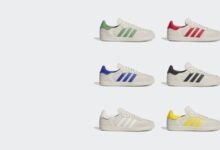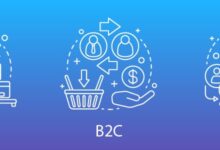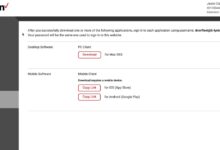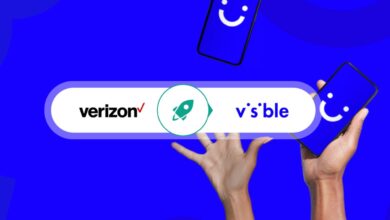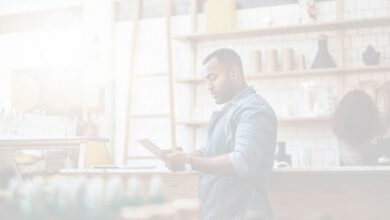B2B Adidas: 7 Powerful Insights for Business Growth
When it comes to dominating the global sportswear market, few names stand as tall as Adidas. But beyond the flashy logos and celebrity endorsements lies a powerhouse B2B operation that fuels retail giants, distributors, and fitness brands worldwide. Let’s dive into how B2B Adidas is reshaping the future of wholesale sportswear.
Understanding the B2B Adidas Ecosystem

The B2B arm of Adidas isn’t just about selling shoes in bulk—it’s a sophisticated network of partnerships, digital platforms, and supply chain innovations that power the brand’s global reach. Unlike B2C, where marketing and consumer trends drive decisions, B2B Adidas focuses on long-term contracts, volume-based pricing, and co-branded collaborations with other businesses.
What Is B2B in the Adidas Context?
B2B, or business-to-business, refers to transactions between companies rather than between a company and individual consumers. In the case of b2b adidas, this includes selling products to retailers, licensing technology to fitness centers, and partnering with corporate wellness programs.
- Adidas supplies footwear and apparel to major retailers like JD Sports and Foot Locker.
- They offer private-label manufacturing for gyms and sports academies.
- Corporate partnerships include supplying uniforms for sports leagues and event organizers.
This model allows Adidas to scale operations without relying solely on direct consumer sales, creating a stable revenue stream even during market downturns.
How B2B Differs from B2C at Adidas
While B2C focuses on emotional branding, limited editions, and influencer marketing, B2B is grounded in logistics, reliability, and contractual agreements. For example, a B2C campaign might launch a new Yeezy drop with social media hype, whereas a B2B deal could involve a three-year supply agreement with a European sports federation.
- B2B decisions are driven by ROI, durability, and scalability.
- Customer service in B2B involves dedicated account managers and logistics support.
- Pricing is negotiated based on volume, lead times, and customization needs.
“B2B is the backbone of our global distribution. Without strong wholesale and partnership channels, our brand wouldn’t reach half the athletes it does today.” — Adidas Supply Chain Executive, 2023
The Evolution of B2B Adidas Over the Decades
Adidas’ journey into B2B wasn’t overnight. It evolved alongside the globalization of sport and retail. From supplying national teams in the 1950s to powering e-commerce platforms today, the brand has continuously adapted its B2B strategy to meet changing market demands.
Early Foundations: From Local Supplier to Global Player
Founded in 1949 by Adolf Dassler, Adidas began as a small shoemaker in Herzogenaurach, Germany. Its first major B2B breakthrough came when the West German national football team wore Adidas boots in the 1954 FIFA World Cup, famously winning the final against Hungary—a moment now known as the “Miracle of Bern.”
- This victory catapulted Adidas into international recognition.
- Soon after, national teams from over 20 countries began sourcing kits and footwear from Adidas.
- The company established formal B2B contracts with sports federations, setting a precedent for future partnerships.
These early deals laid the foundation for what would become one of the most robust B2B networks in sportswear history.
Digital Transformation and E-Procurement
The 2000s marked a turning point for b2b adidas as the company embraced digital transformation. Adidas launched its first B2B portal in 2005, allowing retailers to place orders, track shipments, and access marketing assets online.
- By 2012, over 70% of wholesale orders were processed digitally.
- The introduction of AI-driven inventory forecasting improved delivery accuracy.
- Integration with ERP systems like SAP allowed seamless data exchange with partners.
Today, the Adidas B2B platform offers real-time analytics, automated reordering, and sustainability reporting—tools that help partners optimize their operations.
Key B2B Channels and Partnerships
Adidas doesn’t rely on a single B2B model. Instead, it operates through multiple channels, each tailored to different types of business clients. These include wholesale distribution, licensing agreements, and direct enterprise sales.
Wholesale Distribution Network
One of the largest components of b2b adidas is its wholesale network. Adidas partners with thousands of retailers across 160+ countries, from global chains like Zalando and Decathlon to regional sports stores.
- Retailers receive volume discounts based on annual purchase commitments.
- Adidas provides co-marketing funds to support in-store promotions.
- Dedicated logistics hubs in Belgium, China, and the U.S. ensure fast delivery.
This network allows Adidas to maintain market presence without the overhead of operating every store directly.
Licensing and Co-Branding Agreements
Licensing is another pillar of B2B Adidas. The company licenses its brand and technology to third parties for use in specific markets or product categories.
- Adidas has licensed its Climacool technology to outdoor gear manufacturers.
- Collaborations with gyms like Anytime Fitness include branded apparel lines.
- School districts in the U.S. and Germany use Adidas uniforms under licensing deals.
These agreements expand Adidas’ reach while minimizing production risk, as the licensee handles manufacturing and distribution.
Technology and Innovation in B2B Adidas
Innovation isn’t just for consumers—Adidas integrates cutting-edge technology into its B2B operations to enhance efficiency, transparency, and sustainability.
Adidas B2B Digital Platform Features
The Adidas B2B portal is a comprehensive ecosystem for business partners. It’s more than just an ordering system—it’s a strategic tool for growth.
- Order Management: Partners can place, modify, and track orders in real time.
- Inventory Insights: AI-powered dashboards show stock levels, turnover rates, and regional demand trends.
- Marketing Asset Library: Downloadable campaign materials, product images, and videos are available for co-branded promotions.
The platform also integrates with popular e-commerce systems like Shopify and Magento, making it easier for retailers to sync inventory and pricing.
Supply Chain Transparency Tools
Sustainability is a growing concern in B2B relationships. Adidas addresses this with blockchain-based tracking and carbon footprint calculators.
- Each product batch comes with a digital passport showing its origin, materials, and emissions.
- Partners can access sustainability reports to meet ESG (Environmental, Social, and Governance) compliance requirements.
- Adidas uses recycled ocean plastic in 40% of its B2B product lines, a feature highlighted in procurement discussions.
These tools not only build trust but also help B2B clients appeal to eco-conscious consumers.
Global Reach and Regional Strategies
Adidas’ B2B operations are not one-size-fits-all. The company tailors its approach based on regional market dynamics, consumer behavior, and regulatory environments.
Europe: The Home Market Advantage
As a German company, Adidas has deep roots in Europe. Its B2B strategy here emphasizes long-term partnerships and premium positioning.
- Exclusive distributor agreements in countries like France and Italy protect brand integrity.
- Collaborations with UEFA and Bundesliga teams reinforce credibility.
- Sustainability regulations in the EU are met with transparent sourcing and circular design principles.
European retailers benefit from shorter lead times and higher customization options due to proximity to Adidas’ manufacturing hubs.
Asia-Pacific: Rapid Growth and Localization
The Asia-Pacific region is one of the fastest-growing markets for b2b adidas. With rising middle-class demand and digital adoption, Adidas has invested heavily in localized B2B strategies.
- In China, Adidas partners with Alibaba’s B2B platform to reach small and medium retailers.
- India sees customized product lines for school sports programs and fitness chains.
- Localized marketing support helps regional partners compete with Nike and local brands.
Adidas also operates regional B2B warehouses in Singapore and Japan to reduce delivery times and customs delays.
Challenges Facing B2B Adidas
Despite its success, B2B Adidas faces several challenges that could impact future growth. From supply chain disruptions to shifting consumer preferences, the company must navigate a complex landscape.
Supply Chain Disruptions and Resilience
Global events like the pandemic and geopolitical tensions have exposed vulnerabilities in Adidas’ supply chain.
- In 2022, shipping delays from Vietnam affected 30% of B2B deliveries.
- Adidas responded by diversifying manufacturing to Indonesia and India.
- Investments in nearshoring (producing closer to markets) are now a priority.
The company has also adopted predictive analytics to anticipate disruptions and adjust production schedules accordingly.
Competition from Nike and Emerging Brands
Nike remains Adidas’ biggest competitor in the B2B space, especially in North America and China.
- Nike’s direct-to-retailer model offers faster innovation cycles.
- Emerging brands like Lululemon and On Running are capturing niche B2B segments.
- Adidas counters with stronger sustainability messaging and digital integration.
To stay competitive, Adidas is focusing on agility, customization, and long-term value rather than just price.
Future Trends in B2B Adidas
The future of b2b adidas is being shaped by digital transformation, sustainability, and evolving customer expectations. The company is investing in new models that go beyond traditional wholesale.
AI and Predictive Analytics in B2B Sales
Adidas is leveraging artificial intelligence to enhance its B2B decision-making.
- AI predicts which products will perform best in specific regions, helping partners optimize inventory.
- Chatbots on the B2B portal assist with order inquiries and technical support.
- Machine learning models forecast demand spikes during major sporting events.
These tools reduce waste, improve margins, and strengthen partner relationships.
Sustainability as a B2B Selling Point
Sustainability is no longer optional—it’s a key differentiator in B2B negotiations.
- Adidas’ “Better Cotton” and “Parley for the Oceans” initiatives are highlighted in B2B pitches.
- Partners receive certification for using sustainable Adidas products, enhancing their own brand image.
- By 2025, Adidas aims for 90% of its B2B products to be made from recycled or renewable materials.
This focus aligns with global ESG trends and appeals to environmentally conscious businesses.
How to Partner with B2B Adidas
For businesses interested in becoming an official partner, Adidas has a structured onboarding process. Whether you’re a retailer, distributor, or corporate client, there are clear pathways to collaboration.
Eligibility and Application Process
Adidas evaluates potential partners based on several criteria:
- Proven track record in retail or distribution.
- Alignment with Adidas’ brand values (sustainability, inclusivity, innovation).
- Financial stability and logistics capability.
Interested parties can apply through the official Adidas Group sustainability portal or contact regional sales offices.
Support and Onboarding for New Partners
Once approved, new partners receive comprehensive onboarding support.
- Training on the B2B digital platform and order management.
- Access to marketing co-op funds and brand guidelines.
- Assigned account managers for ongoing support.
Adidas also conducts quarterly business reviews to assess performance and identify growth opportunities.
What is B2B Adidas?
B2B Adidas refers to the business-to-business operations of the Adidas Group, where the company sells products and services to other businesses such as retailers, distributors, sports organizations, and corporate clients, rather than directly to consumers.
How can a company become a B2B partner with Adidas?
Companies can apply through the Adidas Group website or contact regional sales offices. They must meet criteria related to financial stability, brand alignment, and operational capability. The process includes application review, onboarding, and training.
Does Adidas offer private-label manufacturing for B2B clients?
Yes, Adidas offers private-label and co-branded manufacturing for gyms, schools, and sports leagues. These partnerships allow clients to sell Adidas-quality products under their own branding.
What role does sustainability play in B2B Adidas?
Sustainability is a core pillar. Adidas provides eco-friendly materials, carbon footprint data, and ESG compliance tools to help B2B partners meet environmental goals and appeal to conscious consumers.
How does Adidas handle B2B logistics and delivery?
Adidas operates global logistics hubs in Belgium, China, and the U.S., ensuring fast and reliable delivery. Partners receive real-time tracking, inventory insights, and support for customs and import regulations.
The b2b adidas ecosystem is a dynamic, evolving force that powers the brand’s global influence. From its early days as a supplier to national teams to its current status as a digital-first B2B leader, Adidas has mastered the art of business partnerships. By focusing on innovation, sustainability, and strategic collaboration, the company continues to set benchmarks in the sportswear industry. Whether you’re a retailer, distributor, or corporate buyer, understanding how B2B Adidas works can unlock new opportunities for growth and success.
Further Reading:

